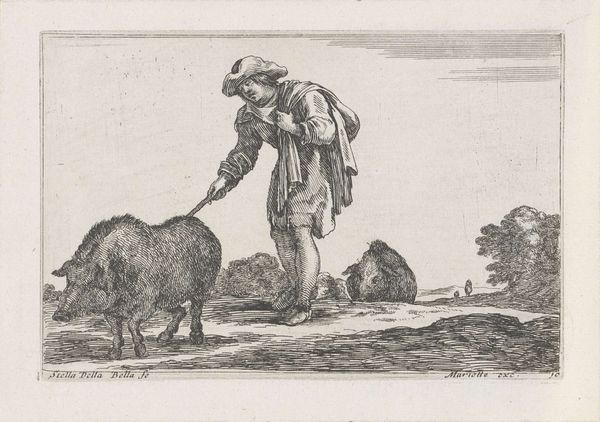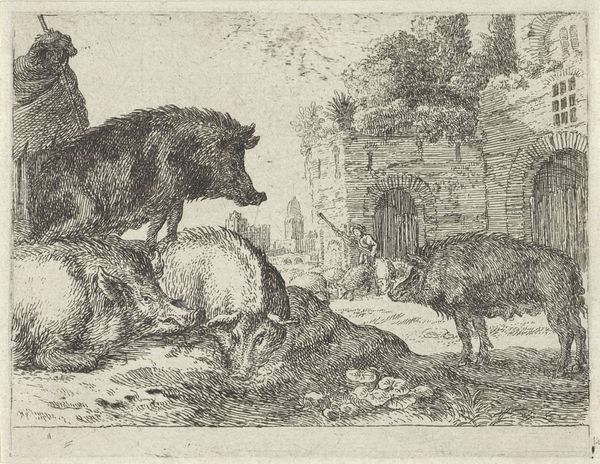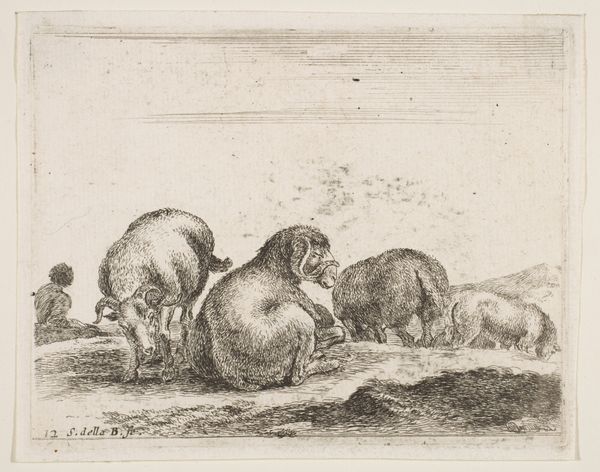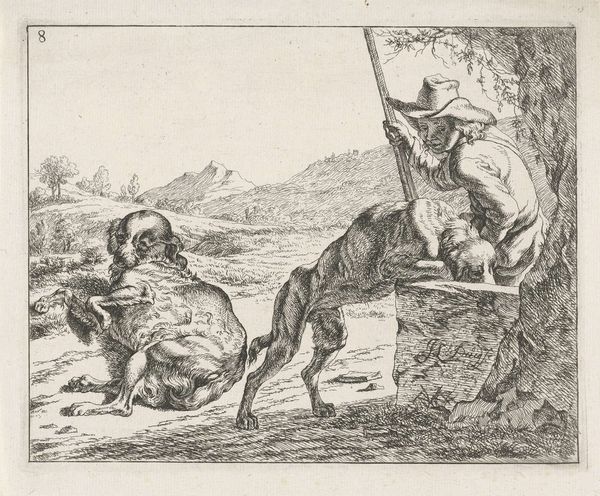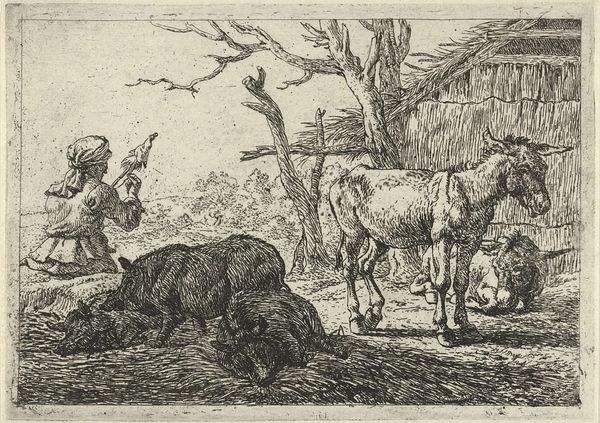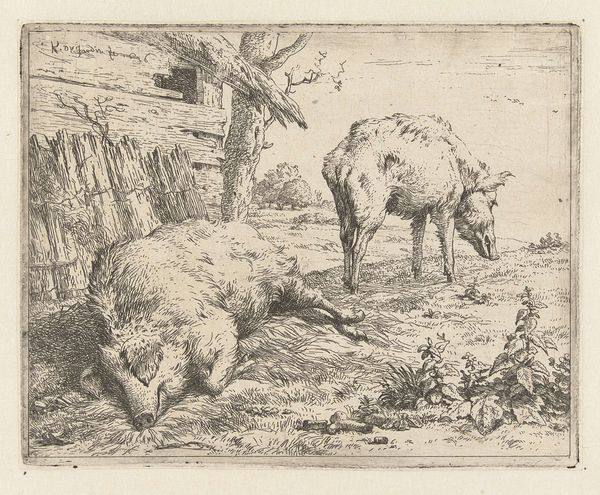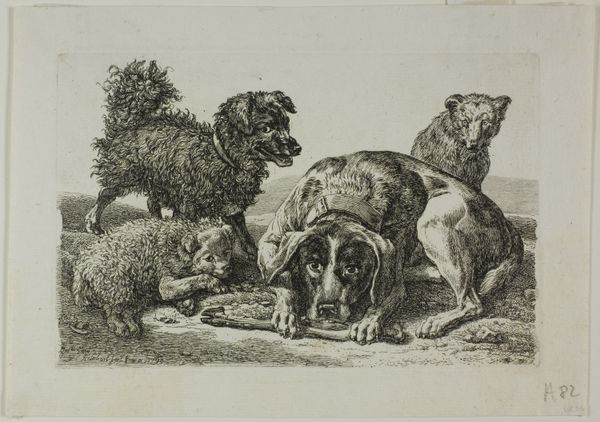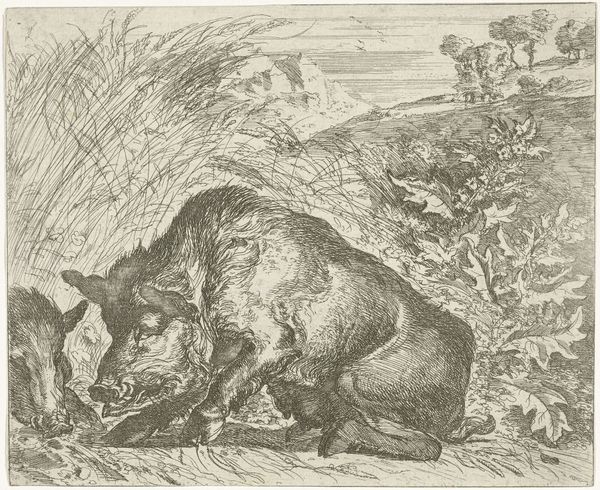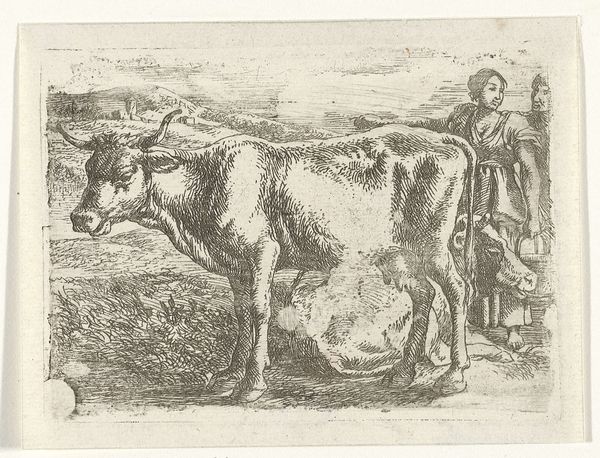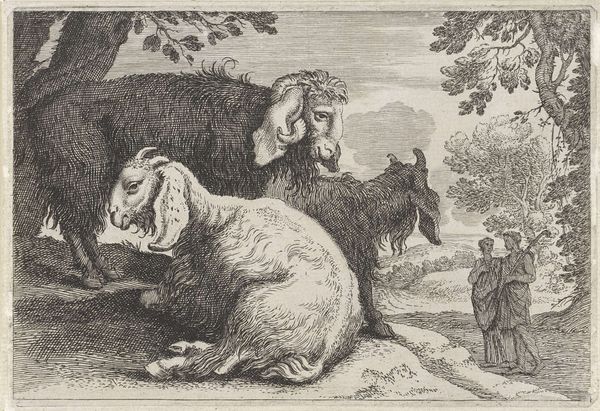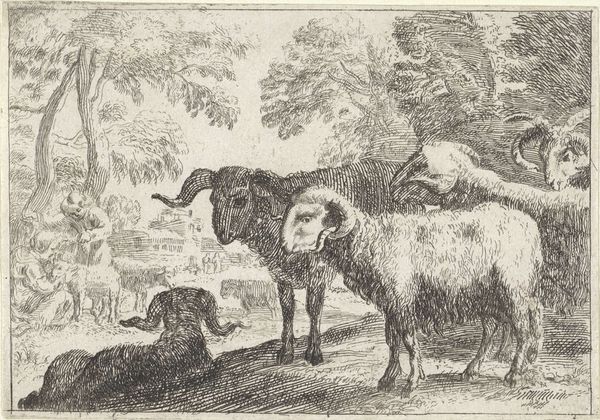
drawing, print, etching, ink
#
drawing
#
ink drawing
#
baroque
# print
#
pen illustration
#
pen sketch
#
etching
#
landscape
#
figuration
#
ink
#
genre-painting
Dimensions: height 95 mm, width 130 mm
Copyright: Rijks Museum: Open Domain
Art Historian: Editor: Here we have "Hunter with his Dogs" by Jan van Ossenbeeck, made sometime between 1647 and 1674. It's an etching, done in ink, and the detail is amazing. The dogs really capture your attention; they look so tired. I'm wondering, what's your take on this piece? Art Historian: I'm immediately drawn to the materiality. Look closely: the lines are etched, presumably into a copper plate, creating these images from manipulated surfaces and the applied labor. The tools, the ink, and the paper used each have their story to tell, offering unique production of an image in early modern Europe. The texture achieved through the hatching technique defines both volume and material surfaces. Do you think the work's original function has any influence? Editor: That's a great point, I was focused on the 'art', I see it now through your perspective. As an etching, was its purpose practical, rather than for show in a gallery? Maybe this image existed originally as an illustration. Art Historian: Precisely. Think about accessibility: prints like these were more readily available and affordable. Images are no longer simply about individual artistic talent or expensive original artworks: reproduction and mass distribution becomes a core function, reaching diverse audiences with differing interests. It suggests a very different relationship to art and its consumption compared to unique paintings. This image hints to both an artistic exploration, but also the early expansion of accessible visual culture through mechanical processes. What do you notice about how Ossenbeeck renders the hunter in comparison to his dogs? Editor: Well, he's actively hunting with some lively dogs in tow, but others are already exhausted; like they’ve been at it for a while. So you could say it is less an image about celebrating the joy of a hunter or heroic depictions but the realities and banalities of labor and toil through animal use. Thanks for offering your thoughts – you have widened my eyes and offered me more insight into it. Art Historian: The pleasure is all mine, and hopefully helps you recognize these critical components present across all artworks.
Comments
No comments
Be the first to comment and join the conversation on the ultimate creative platform.
